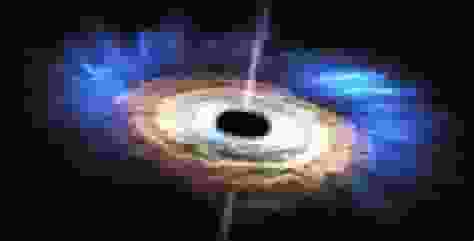A supermassive black hole has been caught in the act of tearing apart a colossal star, ejecting its remains into the depths of space. While it may not be as famous as the enigmatic “Scary Barbie” star, this recent discovery has left astronomers in awe.

This colossal star’s fate puts it in a league rivaled only by the enigmatic “Scary Barbie” star, which was purportedly destroyed by a Supermassive black hole, boasting a staggering 14 times the mass of our Sun. (Photo: Pikist)
Supermassive Black Hole Discovered by Scientists
On August 22, a team of scientists unveiled their groundbreaking findings, suggesting they’ve stumbled upon evidence of the most massive star ever observed being devoured by a supermassive black hole, Space reported.
The aftermath of this celestial crime scene reveals what can only be described as the “guts” of the ill-fated star.
Lead researcher Jon Miller, hailing from the University of Michigan, expressed the significance of their discovery stating they are seeing the guts of what used to be a star and its elements left behind are clues they can follow to figure out what sort of star met its demise.
Through meticulous elemental analysis, the team estimates that the star in question once possessed a mass roughly three times that of our own Sun.
This colossal star’s fate puts it in a league rivaled only by the enigmatic “Scary Barbie” star, which was purportedly destroyed by a Supermassive black hole, boasting a staggering 14 times the mass of our Sun.
To put this in perspective, our Sun’s mass dwarfs that of Earth by a factor of 333,000. However, the veracity of the “Scary Barbie” event remains uncertain.
These cataclysmic events, known as tidal disruption events or TDEs, occur when a supermassive black hole’s gravitational forces interact with a star that ventured too close. This interaction results in the emission of a flare spanning optical, ultraviolet, and X-ray wavelengths, accompanied by the heating of the star’s debris.
Researchers used these TDE-rooted wavelengths, along with powerful instruments, to study the concentrations of elements surrounding the supermassive black hole in ASASSN-14li, situated some 280 million light-years from Earth.
From this data, the team deduced that they were scrutinizing the remnants of a massive star ensnared by the gravitational clutches of a supermassive black hole.
READ ALSO: SpaceX’s Falcon 9 Successfully Delivers 22 Starlink Satellites to Orbit
Supermassive Black Hole
The recent discovery of the supermassive black hole, named ASASSN-14li, offers more concrete evidence due to data collected from NASA’s Chandra X-ray Observatory and the European Space Agency’s XMM-Newton.
It’s important to note that ASASSN-14li was initially identified in 2014.
Enrico Ramirez-Ruiz, a co-author of the study from the University of California, Santa Cruz, expressed the awe surrounding this observation of the supermassive black hole.
Brenna Mockler, another co-author from Carnegie Observatories and the University of California, Los Angeles, noted the significance of these X-ray telescopes, likening them to forensic tools in space.
Some studies even posited that the gas surrounding ASASSN-14li’s supermassive black hole wasn’t linked to a single star but instead resulted from multiple eruptions emanating from the void itself.
Ramirez-Ruiz emphasized the excitement of measuring the unfortunate star’s mass in such a context: “ASASSN-14li is exciting because one of the hardest things with tidal disruptions is being able to measure the mass of the unlucky star, as we have done here.”
The findings of this enthralling discovery have been documented in a paper published in the August 20 issue of The Astrophysical Journal Letters.




![Tyson Foods Plant [Photo: Food Manufacturing]](https://southarkansassun.com/wp-content/uploads/2023/08/iStock_1185520857__1_.5e441daa51cca-600x337.jpg)








![Silverado Senior Living Management Inc. [Photo: Los Angeles Times]](https://southarkansassun.com/wp-content/uploads/2023/10/download-6-4-600x337.jpg)

![China's Wuhan Institute of Virology [Photo: Nature]](https://southarkansassun.com/wp-content/uploads/2023/09/d41586-021-01529-3_19239608-600x337.jpg)















